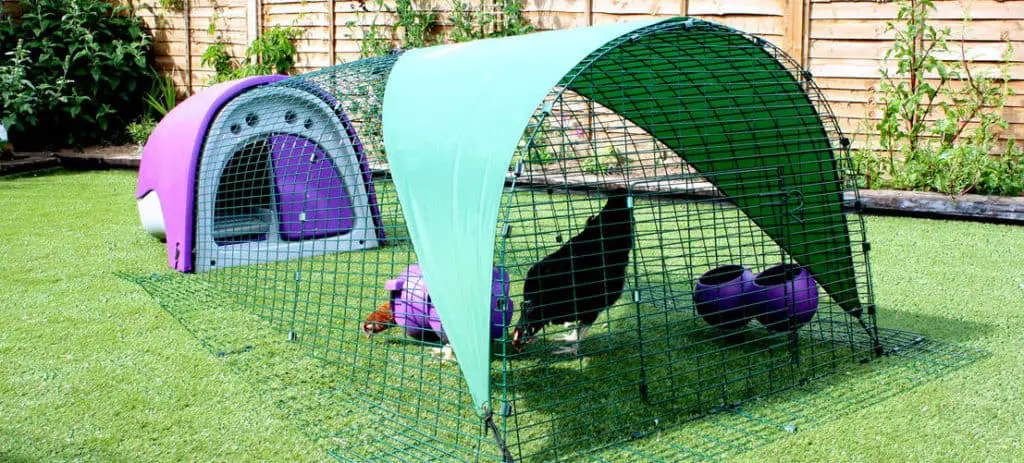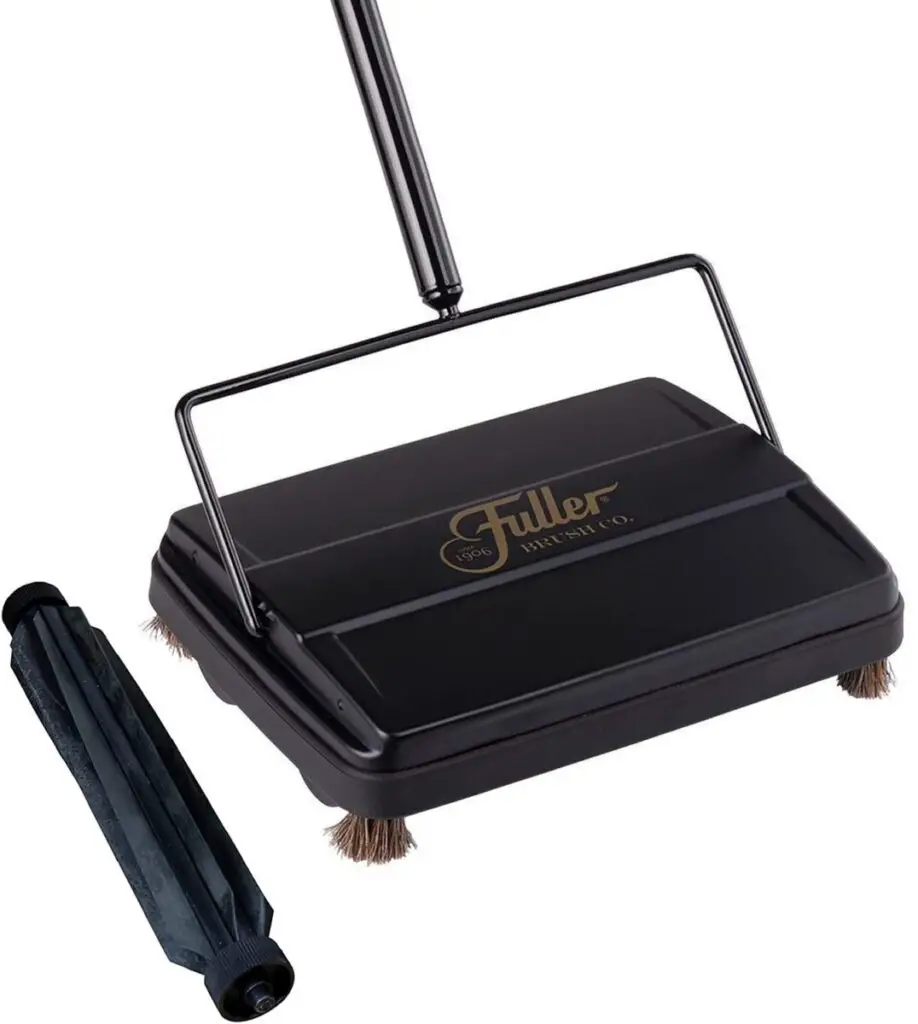How to Keep Chickens
Keeping chickens provides you with an egg supply, but is it worth it, and what do you need to do to keep them?
To keep chickens, you need a coop with at least 3 square feet per bird and a run area with at least 10 square feet per bird. They also need a comfortable perch, nest boxes, water, and nutritious food. Once they’ve moved in, you will need to give them food and water every day and clean out the coop weekly.
Chickens are surprisingly easy to keep and can be affectionate and good-natured. They are a valuable addition to any off-grid home, providing you with eggs and many other benefits. This article will give you everything you need to know to get started keeping chickens in your garden.
Related reading: How much land do you need to be self-sufficient?
Table of Contents
What do chickens need?
Setting up your coop requires some planning, and you will need to buy a few pieced of essential equipment. However, once your girls are set up, to a large extent, they will look after themselves. I get most of the specialist items delivered from Omlet. They have everything you need from coops to cleaning spray.
Here are some of the basics to get you started:
A secure coop

Chickens require a spacious coop with at least 3 square feet per bird, nest boxes, and a comfortable place to perch. For every 3 or 4 hens, you should have one nest box, but you may find that no matter how many you have most chickens will try and lay their eggs in the same one.
The coop floor should be covered in a good layer of wood chips or other suitable absorbent material, and nest boxes need a thicker layer in the bottom. An ideal nest box should be draft-free and relatively dark.
When chickens are ready to roost in the evening, they like a comfortable perch. They sit with their feet flat, so a broad branch or length of wood 2 to 4 inches wide is excellent. I’ve found that wrapping it in an old bicycle inner tube gives them a comfortable night.
Coops should have an easily accessible pop hole that you can secure in the evening. Keeping the coop safe from potential predators is essential. Chickens can be prey to many animals, including foxes, raccoons, and skunks. Strong hinges and locks are vital because you would be surprised at how adept some animals are at breaking their way in for a free chicken dinner.
Chickens will happily return to their coop in the evening to roost, when they’re in you can close the pop hole and open it again in the morning. You can get some excellent battery-powered coop door openers, like this one over at Omlet, that can handle that job for you.
Chicken coops at Omlet

The Eglu from Omlet, is one of the best coops that I’ve ever seen, its a self contained unit with removable sections for easy cleaning. They can easily be moved around or added to new sections to increase the living space or run area. The ‘classic’ is a little bit too small for my liking but the large Eglu Cube is ideal.
However, while I would love to have one, when we got our first girls the $600, or more, price tag was just too much. Instead, I converted a shed into a beautiful spacious home for them. Wooden coops or adapted sheds are often more affordable but if you can afford to go for the luxury option then it’s got to be an Eglu.
For something slightly more affordable and a lot larger, I would definitely go for this spacious Fontana EcoFlex coop from Home Depot. It’s easy to clean, has plenty of room, good ventilation, and two nest boxes. Many coops you can buy seem too small but this one will be ideal for a small flock.
A spacious run

Ten feet of outside space per chicken is the absolute minimum of outdoor space, but the bigger, the better. In my view, most of the runs provided with the small starter coops you can find just aren’t big enough. Far better to build your run area or let your chickens have the run of an area of your garden.
My girls have a corner of my yard fenced off as their own, but I often let them have access to the whole area. However, if you have lots of potential predators in your area, an enclosed run is essential. It’s vital that you either dig the fence into the ground or include a wire bottom. This acts as a deterrent to any predators who want to dig their way in.

The Omlet range of walk-in runs can be bought in several sizes and configurations. If you’re concerned about predators, this is one of the best systems you can get. It’s completely enclosed and has an anti-predator skirt. You can peg it down, but I would recommend digging it in so that the skirt sits under the soil.
Chicken tractors
Chickens are incredible earthmovers. A chicken tractor is a movable run that can be placed over a vegetable bed after harvest. Your chickens will turn the soil and leave you with a bed ready for your next crop. You can use a simple wooden frame to construct your tractor or you can make something more detailed, like this one:
Chicken food
When your girls start to lay, you can use complete layers pellets or mix your own super chicken food. Ever since I saw this video by Becky, I’ve been mixing my own, and our chickens love it.
We also supplement their diet with a range of fresh veg offcuts from our garden. Food should be available for your chickens throughout the day. Topping up their food in the morning can be a good routine, and the girls will greet you and even eat from your hand.
Chicks should be started on chick crumb because it’s easier to digest, and layers pellets contain high levels of calcium, which could be harmful to hens that aren’t producing eggs daily.
The Murray McMurray Hatchery have a useful list of which foods you can feed to chickens and some you shouldn’t.
Grit
There are two types of grit necessary for chickens:
Insoluble grit- This is often made from granite or flint. Because chickens don’t have teeth to break up their food, grit is swallowed and retained in their gizzard. The gizzard is a muscular portion of the digestive system that keeps grain and other food until it is ground down by this grit.
Often, free-range hens can find their grit from your garden, but it’s always worth having a supply near their coop for them if they choose to get some more.
Soluble grit – This is calcium-rich crushed oyster shell, and once swallowed it is dissolved. It can then be used to strengthen bones and to make eggshells. Layers pellets are a complete food, so technically, you shouldn’t need to add additional calcium; however, this depends on several things, including chicken health, egg quality, and egg size.
Providing a readily available source of oyster shell will allow laying hens to take it if it’s necessary. It should only be ever fed to laying hens because if it’s taken by those who are no longer laying it’s likely to damage their kidneys.
Keeping rats and mice out of the coop
When I started keeping chickens, I was concerned that they would attract rats. I did some research and discovered that rats are most attracted to food if there is also a water source nearby. So I now follow some simple steps, and in the years we’ve had chickens, we’ve never once had any rodent problems.

- Use rat-proof feeders and drinkers. I use these by dine-a-chook, they come from Australia, but they were so worth the price and postage. Once you’ve fixed the bracket, you can attach or detach them quickly, and they are perfect for stopping other creatures from getting at the food or water. I have a feeder and drinker for every six birds, and they find them easy to use and access whenever they want food.
- Clear the feeder and drinker away at night.
- Immediately clear up any food spills. It’s fine to scatter seed or treats in the run for your girls but ensure that they eat it all, and none is left overnight.
- Keep all food in a metal bin or similarly secure storage.
- Remove any other water sources, including puddles. Puddles can be a source of illness and infection. Fill them in if you can or through woodchips or straw into the run to prevent the chickens from using them to drink.
- Clean the coop every week. When you decide to get, your birds set a time that will become your weekly routine to clean out the coop. This can be a chore, but it’s essential for the good health of your flock. Some premade coops come with slide-out floors to make cleaning even more straightforward. When we first started, I converted an old shed into a coop. I added lino to the floor and sealed the edges. It made it easier to clean, but the size of it meant it was a huge task every week. We now have a smaller coop; the girls still have plenty of space, but it’s cozier and easier to clean.
- Collect eggs every day. If you leave the eggs any longer, they are likely to get broken and attract pests and rodents.
The benefits of keeping chickens
The benefits of keeping chickens are too numerous to include them all here, but here are a few of the best:
A fantastic supply of fresh eggs

Eggs from your chickens are so much better than those you buy in the shops. Your chickens are likely to be in better health and are better fed than those used in commercial egg production. You will also be amazed at how many you get. We started with a small flock of 6 chickens, and all year were blessed with 6 beautiful eggs every day.
Incredible fertilizer
When rotted down, chicken manure makes excellent rich fertilizer which will bring life to your garden. Some people collect the manure, and others move the area the chickens can roam in so that the fertilize a new patch each time.
We had a young pear tree that was struggling to produce any pears and looked as if it was nearly dead. Over several years of chickens living around it, it’s now one on the healthiest trees I’ve ever seen, and the annual pear crop matches that of some trees twice its size.
An aid to recycling
Scraps from fruit and vegetables can be fed to your girls instead of throwing them away or putting them on the compost heap. Chickens will handily recycle your scraps into eggs and nutrient-rich fertilizer.
Weeding and tilling

If you give chickens access to an area of your garden at a time, they are excellent at clearing weeds and unwanted natural waste. They will also turn the earth over as they search for bugs and seeds.
By directing your girls with your chicken tractor, you can encourage them to prepare the ground for new seeds and remove the remains of old crops. Having chickens significantly reduces the amount of digging you need to do between crops.
They are great company
It’s surprising to many people just how enjoyable it is to have chickens in your garden. They can be incredibly affectionate and are always keen to find out what you’re up to. Some breeds are more domesticated than others, but if you’re present in or near their coop regularly and bring them tasty treats, they will soon get to know and trust you.
They are particularly great if you have young children. My daughters love to collect the eggs and are surprisingly keen to help me clean out the coop.
What are the challenges of keeping chickens?
Although I would recommend keeping chickens to most people, they aren’t without their challenges:
Keeping them safe
Even if you keep them locked away in a predator-proof cage, you may forget to lock it correctly one day. Predators are often on the lookout for chickens and will find any sign of weakness in the security of your set up. The risks depend on what wildlife is present in your area, but it’s worth being security conscious.
If they develop health problems
Looking after an ill chicken can be tough because it’s often hard to work out what to do for the best. However, if you have an excellent basic understanding of caring for them and keep their living areas clean, then you will minimize the risks to their health.
Some natural additives and tonics can be added to their water and feed to keep them in good condition. Getting a good book on chicken health will help you to avoid some of the more common conditions.
I have a copy of The Cheicken Health Handbook, and it gives you an excellent coverage of many of the situations you may face with your flock (get it here at Barnes and Noble).
Initial and ongoing cost
A lot of the set up for chickens can be done on a budget, but there are a few unavoidable costs when you get started. Buying or building your coop is the most considerable expense, but if you’ve never had chickens before, some of the smaller items like feeders, drinkers, and grit hoppers can soon mount up in cost as well.
Also, you must continue to provide feed, absorbent material for the coop, and grit. However, as you get to learn what is necessary for your chickens, you may find ways to reduce the cost.
Regular cleaning and maintenance
Getting the conditions right for your chickens can be a significant investment of time as well as money. It can be challenging to start with, but regular cleaning and maintenance of the coop and flock will save expenditures later.
Most coops can be cleaned quickly, and if you use wood chips or similar natural materials on the floor of the coop, they can make a great addition to your compost heap.
Conclusion
Chickens can be an excellent addition to any off-grid home and, with some regular effort, will bless you with many rewards, including regular, nutritious eggs. Before you get your flock, take some time to consider if you have the space and time to make it a success.
Check out my recommendations for equipment that will help you take your home off-grid.
My Off-Grid Product Recommendations

Useful Book: Off Grid Living 2022-2021 – This incredible step by step guide is a great read and gives you useful information about reaching self-sufficiency in just 30 days. Get the paperback on Amazon or read it free with a Kindle Unlimited subscription or listen to the audio version with Audible Plus membership.

Small Solar Panel Systems: Silicon Solar – This is an excellent company that offers lots of products to get you started on your solar journey. Visit Silicon Solar.

Family Water Filter: Big Berkey – For a fast, affordable water filter with no plumbing required, you can’t beat a Big Berkey gravity-fed filter like this one from Amazon.

Canning Equipment – This canning starter kit, 22-quart Barton pressure canner and twelve-pack of Ball 16oz mason jars will help you preserve food as you work towards self-sufficiency.

Cleaning: Fuller Carpet Sweeper –. This carpet sweeper is an ideal way to keep your home clean without using up your energy stores on vacuuming.

Handy Knife: Gerber Serrated Paraframe – This handy all-purpose knife is lightweight and ideal for all those little jobs around your home and garden.







